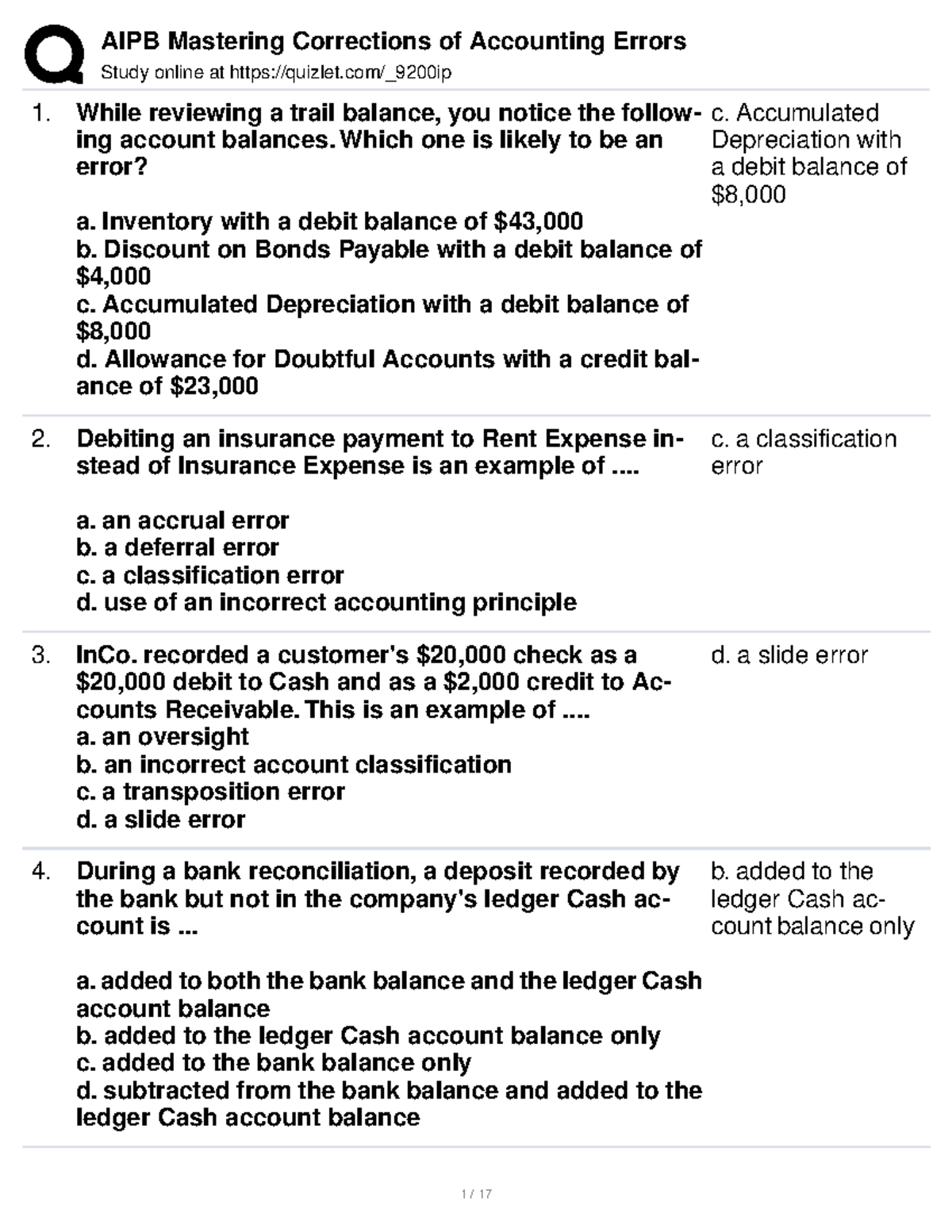Mastering Corrections And Clarifications: Best Practices For Accuracy

Table of Contents
Identifying and Assessing Errors
Proactive measures are key to minimizing the need for corrections later. A robust error prevention strategy is the first step towards mastering corrections and clarifications.
Proactive Error Detection
Preventing errors before they occur is far more efficient than correcting them afterward. Several strategies can significantly reduce error rates:
- Thorough Proofreading: Multiple rounds of careful proofreading, ideally by different individuals, can catch many errors. Employing proofreading checklists can improve consistency and thoroughness.
- Rigorous Peer Review: Formal peer review processes, common in academia and scientific publishing, provide a critical external assessment, identifying potential flaws and inaccuracies.
- Utilizing Technology: Leverage technology to detect errors automatically. Grammar and spell checkers, plagiarism detection software, and style guides integrated into word processors all offer significant benefits.
These proactive measures not only reduce the number of errors but also save time and resources in the long run. By catching errors early, you avoid the costly and time-consuming process of issuing corrections and managing their fallout.
Reactive Error Identification
Even with proactive measures, some errors may slip through. Therefore, establishing systems for reactive error identification is crucial:
- Customer Feedback Mechanisms: Encourage feedback from your audience through surveys, comment sections, and dedicated feedback forms. Actively solicit opinions and address concerns.
- Internal Audits: Regular internal audits of data, reports, and publications can help identify systemic errors or inconsistencies.
- Social Media Monitoring: Monitor social media for mentions of your work, looking for comments or criticisms that might indicate inaccuracies.
Effectively collecting and analyzing feedback, whether positive or negative, is paramount. This requires establishing clear communication channels and actively responding to concerns raised.
Implementing Effective Correction Strategies
Once an error is identified, prompt and transparent action is essential. Delaying corrections can damage credibility and exacerbate the problem.
Timely and Transparent Corrections
Speed and openness are paramount in addressing inaccuracies. The longer you wait, the more significant the damage.
- Issuing Errata: For formal publications like academic papers or books, an erratum is a formal correction typically included in a subsequent issue or online appendix.
- Updating Online Content: For online content, updating the information directly on the website or platform is the most immediate and efficient solution.
- Sending out Correction Notices: For sensitive information or a large audience, consider sending out targeted emails or press releases to announce the correction.
Each method has advantages and disadvantages. Consider the reach, cost, and impact on your audience when choosing the appropriate method. Transparency about the correction process will build trust.
Choosing the Right Correction Method
The appropriate correction strategy depends on the error's severity and nature:
- Minor Typographical Errors: These often require a simple online update or a note in a subsequent edition.
- Major Factual Inaccuracies: These demand a more formal correction, like an erratum or a public announcement.
- Misinterpretations of Data: These necessitate a detailed explanation of the error and its correction.
Develop a decision-making framework to guide your choices. Factors to consider include the audience, the potential impact of the error, and the resources available for correction.
Communicating Corrections and Clarifications
Effective communication is crucial for ensuring your corrections reach the intended audience and are clearly understood.
Crafting Clear and Concise Corrections
When writing correction statements, clarity and conciseness are paramount. Avoid jargon and technical language your audience might not understand.
- Clearly Identify the Error: Specifically state what was incorrect.
- Explain the Correction: Clearly state the accurate information.
- Offer an Apology (If Appropriate): A sincere apology can help mitigate any negative impact.
Good correction statements are direct, transparent, and easy to understand. Avoid making excuses or downplaying the significance of the error.
Choosing the Right Communication Channels
The most effective communication channel depends on the error's severity and audience:
- Email: Suitable for individual corrections or small groups.
- Website Updates: Ideal for online content and a broad audience.
- Press Release: Appropriate for significant errors requiring widespread attention.
- Social Media: Can be used to announce corrections, address concerns, and engage with the audience.
Consider factors such as reach, speed, and cost-effectiveness when selecting your channels. Ensure your message is tailored to each specific platform.
Learning from Mistakes: Continuous Improvement
Analyzing past errors is essential for preventing future occurrences. A culture of continuous improvement is vital for achieving and maintaining accuracy.
Documenting and Analyzing Errors
Tracking and analyzing errors helps identify patterns and weaknesses in your processes.
- Error Logs: Maintain a detailed log of all errors, including the nature of the error, when it was discovered, how it was corrected, and any contributing factors.
- Post-Publication Reviews: Conduct regular reviews of your work to identify areas where errors are most likely to occur.
Data analysis can reveal trends, highlighting areas requiring improvement in your workflows and procedures.
Implementing Preventative Measures
Use error analysis to inform changes that minimize future inaccuracies:
- Improved Training: Provide additional training to staff on proofreading, fact-checking, and data handling.
- Stricter Review Processes: Implement more rigorous review processes, involving multiple individuals at different stages.
- Better Technology: Invest in better technology to support error detection and prevention.
By actively learning from mistakes and implementing preventative measures, you create a culture of accuracy and significantly reduce the need for future corrections.
Conclusion
Mastering corrections and clarifications is a continuous process requiring proactive error detection, effective correction strategies, and clear, timely communication. By implementing the best practices outlined in this article, you can significantly improve accuracy in your work, build trust with your audience, and protect your credibility. To truly master corrections and clarifications and improve accuracy through effective corrections and clarifications, proactively implement these strategies and foster a culture of continuous improvement within your organization.

Featured Posts
-
 Bhart Ky Brbryt Mqbwdh Kshmyr Myn Eyd Ke Dn Nwjwan Shhyd
May 01, 2025
Bhart Ky Brbryt Mqbwdh Kshmyr Myn Eyd Ke Dn Nwjwan Shhyd
May 01, 2025 -
 4 Kwietnia Akcje Charytatywne Z Okazji Miedzynarodowego Dnia Zwierzat Bezdomnych
May 01, 2025
4 Kwietnia Akcje Charytatywne Z Okazji Miedzynarodowego Dnia Zwierzat Bezdomnych
May 01, 2025 -
 Gratis New York Times Toegang Via Nrc De Reden
May 01, 2025
Gratis New York Times Toegang Via Nrc De Reden
May 01, 2025 -
 Frances Rugby Dominance Duponts Impact Against Italy
May 01, 2025
Frances Rugby Dominance Duponts Impact Against Italy
May 01, 2025 -
 Viata Libera Galati Actualizare Privind Dosarele X
May 01, 2025
Viata Libera Galati Actualizare Privind Dosarele X
May 01, 2025
Latest Posts
-
 Analyzing Frances Six Nations 2025 Prospects
May 02, 2025
Analyzing Frances Six Nations 2025 Prospects
May 02, 2025 -
 Six Nations 2025 Frances Path To Continued Victory
May 02, 2025
Six Nations 2025 Frances Path To Continued Victory
May 02, 2025 -
 Six Nations 2025 Assessing Frances Chances
May 02, 2025
Six Nations 2025 Assessing Frances Chances
May 02, 2025 -
 The Future Of French Rugby A Six Nations 2025 Perspective
May 02, 2025
The Future Of French Rugby A Six Nations 2025 Perspective
May 02, 2025 -
 Antoine Duponts Match Winning Performance France Vs Italy Rugby
May 02, 2025
Antoine Duponts Match Winning Performance France Vs Italy Rugby
May 02, 2025
